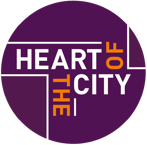One tonne of CO2 is equivalent to:
- The average emission of one passenger on a return flight from Paris to New York
- Driving from London to Edinburgh over 10 times
- Having your heating on full blast for 80 days straight
- Eating over 1,000 beef steaks or 4,100 wheels of camembert
12.7 tonnes weighs the same as:
- 18 dairy cows
- 10,500 bottles of wine
- 25 million plastic straws
And to deadlift that weight you’d need 25.5 Eddie Halls (the world’s strongest man, who lifts 500kg!)
Your company’s impact
Some interesting facts you might not have considered:
- A one-hour HD video call between two people in London, on PCs over wifi = 1km travelled by car or 10km by train.
- The carbon footprint of manufacturing a smartphone can be up to as much as 95kg – and that’s just producing it, not the emissions of using it. How many mobiles are in use in your business? Have a go at working out an equivalent for that!
- A one-minute mobile to mobile call produces 57g of CO2, sending a text produces 0.014g of CO2 and using 1GB of data uses 3kg of CO2.
- A laser printer produces approximately 1g of CO2 per page printed. The average box of printer paper contains 2,500 sheets, so every time you open a new box of paper remember that 2.5kg of CO2 has been produced.
- A year’s worth of business emails for one person has the same emissions as them travelling the distance of the central line 80 times a year.
- Two Google searches have roughly the same emissions as boiling a full kettle (15g).




